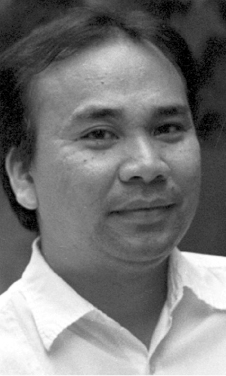
Jobers Bersales
When custodian Edna Paras opened the wooden doors of the nondescript one-storey building Thursday last week, I was not prepared for what was about to see: metal shelves lining the length of the entire room from end-to-end and side-to-side, all chock-full of brown envelopes, thousands of them.
Rising seven shelves high before me were the personnel files of anyone that had worked in the old mines of the Soriano-owned Atlas Consolidated Mining and Development Corp. (ACMDC or simply Atlas Mining) in Lutopan, Toledo.
Equally surprised was German “Joy” Desuyo, a third-generation employee in charge of mine tours who accompanied me inside. Even company IDs were stored in boxes, surrendered as part of protocol following the retirement of an employee.
Before our eyes lay the documentary remains of men, a number of them now long gone, who once worked inside the open pit and underground tunnels that made Atlas the largest copper mine in Asia and made a sleepy, forgotten town into a bustling city barely 10 years after the company started, which was way back in 1953 when construction work began to prepare the extraction of copper. The records date from there to the painful and shocking closure in 1994 following a steady decline in the price of copper.
On another room adjacent to it, in the same building, were the records of Carmen Copper Corp., the ACMDC subsidiary that restarted mining operations in 2006, ending the pall that had made the adjacent bustling village of Lutopan (renamed Don Andres Soriano in honor of the ACMDC founder and owner) seem like an abandoned barrio.
I must confess that I have never seen a private company archive, if you will, so comprehensive and massive as the one I had seen. Such was the impact of what I saw that it seemed my visit for the fourth time at Carmen Copper had reached its climax barely hours after it had began.
I had earlier told Sofia Picardal, my contact at the Community Relations Office of the company, that I would stay for four days to gather materials that would effectively form an information center and a museum of history and of the science behind and beyond copper ore. Now my work was suddenly almost done for the moment!
You see, this archive was not the only surprise of the day. In the morning, I was shown all the old equipment, some of them exhibited earlier in the now-defunct Museo Toledo, were located again, that would see the light of day again, as it were, in an outdoor gallery that will be hopefully inaugurated next month.
I was even regaled by mine superintendent Engr. Mario Ygoña with stories of life in the mine, especially the now-closed underground sections, while inspecting the rail cars outside the Sigpit Tunnel and the portal of the old Carmen Decline, where huge trucks would go down straight into the tunnel hundreds of feet blow.
After inspecting the heavy equipment, I chanced upon a former student, Bryan Cotejo, a registered nurse and also an industrial engineer who runs the warehouse department, where one would find a lot of old things, including a huge oil painting of the Carmen Open Pit, dating to the early 1980s by an artist whose signature was alas barely legible.
The morning ended with yet another surprise: down at the ACMDC Medical Center were bound volumes of patients records painstakingly kept pristine since the time of the old wooden infirmary, decades before the huge and modern hospital was inaugurated.
A reunion of sort happened the following day, when I met old miners from the 1960s to the 1970s to present to them the plans for the info center-cum-museum. They will be the subject of video interviews soon. Speaking of videos, the afternoon was as surprising that day as the one before: we found old radios, transceivers and two huge cabinet base repeater stations, carefully preserved in an old abandoned section of a radio room.
The next step now is to gather more stories and more memorabilia of employees, especially old aluminum mine hats, dog tag-like “chapa” (both of which were unfortunately surrendered upon retirement and which cannot as yet be found), old photographs, pay slips, uniforms, and the first issues of the Atlas Copper Magazine, which started in the late 1960s.
Even as mining has become somewhat problematic in the present circumstances of the world, its story and that of the miners who made ore extraction possible — as well as the successful attempts to rehabilitate sections of the land and the coexistence of communities and this huge copper mine — need to be told and shown to all.
Long after copper extraction in this part of the country will have ended, I am sure everyone’s hope is that this important period in our history, marked by both successes and sacrifices, should not be forgotten.
Disclaimer: The comments uploaded on this site do not necessarily represent or reflect the views of management and owner of Cebudailynews. We reserve the right to exclude comments that we deem to be inconsistent with our editorial standards.




